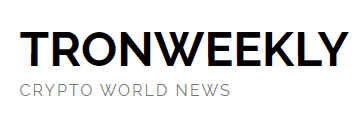You are here: Home / News / Ethereum’s Pectra Upgrade: Major Changes Coming – First Test Set for Feb 26

February 8, 2025 by Mishal Ali
Key Takeaways:
- Ethereum’s Pectra upgrade to enhance staking efficiency and validator operations.
- Auto-compounding and Max Effective Balance increase staking rewards.
- Partial withdrawals add flexibility for staked ETH management.
Ethereum developers have confirmed the test schedule for the highly anticipated Pectra upgrade, which is set to bring major changes to validator operations and staking mechanics. The first test will launch on the Holesky testnet on February 26, followed by Sepolia on March 5. If all goes as planned, the mainnet upgrade could go live in early April.
Ethereum’s core developer Tim Beiko announced the details, stating that Holesky would fork at slot 3710976 on February 24, while Sepolia would undergo its upgrade at slot 7118848 on March 5. Following a successful Sepolia test, developers will confirm the mainnet activation date during the March 6 call.
Pectra is going live 🥳
Holesky will fork at slot 3710976 (Mon, Feb 24 at 21:55:12 UTC)
Sepolia will fork at slot 7118848 (Wed, Mar 5 at 07:29:36 UTC)
Assuming Sepolia goes smoothly, we'll pick the mainnet slot on the March 6 ACD call 📅
As the community prepares for the changes, staking service providers like P2P.org have begun adapting their infrastructure. In a recent blog post, the firm emphasized the transformative nature of Pectra, calling it one of Ethereum’s biggest upgrades to date.
The Pectra Upgrade 101
Ethereum’s Biggest Staking Upgrade is Coming!
Are You Ready?
We are! 💙
The Pectra Upgrade (March 2025) changes everything for validators, stakers & institutions.
🧵👇 We've been preparing for months. Here’s what you need to know. pic.twitter.com/WXruwHMe2k
Ethereum Validator Economics Overhaul with EIP-7251
A core component of the Pectra upgrade is EIP-7251, which restructures Ethereum’s validator model. Under the current system, validators must operate with fixed 32 ETH stakes. With Pectra, the Max Effective Balance (MEB) increases up to 2048 ETH per validator, consolidating operations while maintaining Ethereum’s security model.
This means a single 2048 ETH validator will have the same weight as 64 individual 32 ETH validators, improving staking efficiency and reducing operational costs for large-scale participants. The proposal also ensures that larger validators gain more frequent block proposal opportunities proportionally, optimizing the network’s consensus process.

The shift is expected to lower overhead costs for staking providers and increase profitability for high-stake validators. P2P.org has confirmed plans to integrate these changes, aiming to optimize user network reward rates.
Auto-Compounding & Partial Withdrawals Boost Staking Returns
Another major upgrade with Pectra is auto-compounding for Consensus Layer rewards. Until now, staking rewards were sent directly to withdrawal addresses, requiring manual restaking. With the new 0x02 validator type, rewards can now be automatically reinvested, leading to increased long-term staking yields.
For instance, with a base staking NRR (Network Reward Rate) of 3.2%, auto-compounding can increase APR to 3.24% in one year and 3.42% in five years. A compounded validator would receive 5.47 ETH in rewards in five years versus 5.12 ETH for non-compounded validators.
Furthermore, Pectra introduces partial withdrawals, allowing users to withdraw a portion of their staked ETH without shutting down their validator. This makes staking more accessible while still taking part in the network.
Related Reading | Mind-Blowing Q4: Solana’s App Revenue Soars to $840M, Up 213%

 6 months ago
44
6 months ago
44




 English (US) ·
English (US) ·